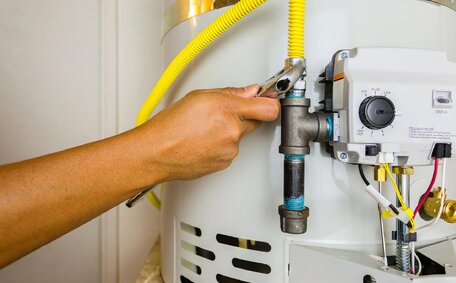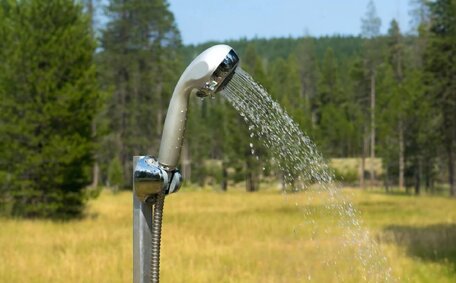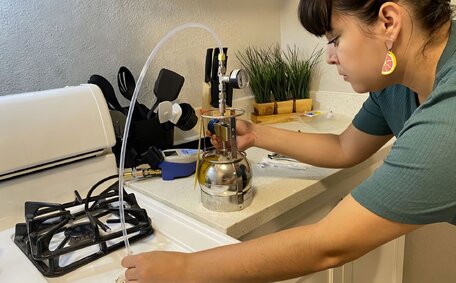What is carbon monoxide and why is it dangerous?
Carbon monoxide (CO) silently arises from incomplete combustion of fuels such as natural gas, oil, coal, and wood. Common household gas appliances, when faulty, like water heaters, stoves and space heaters, can release this toxic gas.
Carbon monoxide poses severe health risks by binding with haemoglobin in the blood, which hinders oxygen delivery to organs and can lead to tissue damage, or even death. High exposure levels can trigger symptoms that include headaches, dizziness, weakness, upset stomach, vomiting, chest pain, and confusion.
Continuous exposure to carbon monoxide, a threat hidden to sight and smell, can result in critical health issues by impairing the blood’s capacity to transport oxygen. Symptoms of CO poisoning often resemble flu-like conditions, making it hard to detect the danger without a CO detector.
Installing carbon monoxide detectors throughout your home and ensuring gas appliances are maintained and serviced at least once every two years are essential steps to prevent CO exposure and poisoning.
Health effects and symptoms of carbon monoxide exposure
Exposure to carbon monoxide can cause a spectrum of symptoms from mild to severe, especially after a gas leak in poorly ventilated areas. Even at low levels, CO can accumulate undetected, potentially making spaces with heaters high-risk zones for air pollution and associated symptoms, including:
- Headaches
- Dizziness
- Nausea
- Vomiting
- Fatigue
- Confusion
- Irritability
- Impaired vision and coordination
Symptoms can worsen with ongoing exposure to combustion products from faulty gas heaters or elevated levels of pollutants, leading to:
- Chest pain
- Difficulty breathing
- Loss of consciousness
- Brain damage
- Heart damage
- Death
Health effects vary based on the inhaled concentration and exposure duration; notably at risk are those with childhood asthma, unborn babies, infants and older individuals.
Immediate action is necessary if symptoms of carbon monoxide poisoning appear, including moving to fresh air and seeking medical attention to prevent further risks associated with gas heaters.
Where carbon monoxide accumulates in the home
CO can build up to dangerous levels in homes with open flued heaters, particularly in enclosed spaces lacking proper ventilation. Some of the most common areas for CO to accumulate include:
- Bathrooms - Especially those with gas water heaters in a confined space
- Bedrooms - Particularly those equipped with an open flued gas heater instantiate a heightened risk
- Laundries - Near the laundry appliances, if gas operated
- Kitchens - From gas stoves and range ovens without an exhaust fan
- Garages - Where your car is running while garage doors are kept shut
Invisible and odourless, carbon monoxide can permeate areas around fuel-burning appliances, not just at the source. CO can even spread to distant parts of your home through duct systems. All areas in a home can be susceptible to carbon monoxide buildup if negative pressure exists alongside insufficient ventilation.
Regular checks for proper ventilation and anomalies in flues and exhaust systems are crucial for appliance safety. Particularly vulnerable areas like windowless rooms and basements need extra vigilance as they can become hotspots for CO buildup.
The importance of ventilation around gas appliances
Ensuring proper ventilation is a measure you can take reduce danger, fostering good airflow specifically against gas stove emissions. Through gas combustion, appliances emit carbon monoxide and other combustion products as byproducts, and these can accrue to hazardous levels without ample airflow.
Permanent ventilation is essential in rooms with gas appliances to prevent the buildup of harmful gases. Such ventilation could be wall vents, ceiling vents, underfloor vents, or louvres, proportional to the room size. Ensuring ventilation is efficient, matched to the energy input of gas appliances and placed strategically high and low, is vital for air circulation.
It’s also important to run extractor fans when cooking with gas stoves and cooktops, as well as ensuring range hoods above them vent outside. Newer high-efficiency range hoods are exceedingly adept at mitigating air pollutants in your kitchen. Make sure vents aren’t obstructed by furniture or dust buildup.
Gas appliances – especially those that emit hazardous gases like nitrogen dioxide – should be professionally serviced at least once within the manufacturer-recommended period for safety. Areas housing any gas-burning appliances should be checked regularly to ensure vents remain clear and fans functional.
Recognizing when professional help is needed
It’s important to know when to call in a professional gas fitter to inspect your gas appliances. Signs that you may need professional help include:
- A yellow or orange flame on your gas stove instead of a blue flame
- Accumulated soot or carbon around appliance vents
- Strong gas odours coming from an appliance
- The CO detector frequently alarming
- noticing symptoms carbon monoxide related in household members
Servicing your gas appliances at least once every two years by a licensed gasfitter is essential, particularly for inspecting and addressing faulty components. This helps ensure they are operating safely and efficiently. Older appliances, known to carry an increased risk of CO issues, may necessitate more regular servicing.
When hiring a professional, confirm their extensive, qualified expertise and current licensing as a proficient gas fitter in handling gas appliances. Ask to see their Gas Work Authorisation card. Ensure any gas-related installation, repair or inspection is done by an authorised technician.
Trust your senses – if you detect any unusual smell or taste associated with gas appliances or emissions, like an odd aroma from your heater, promptly engage a professional. Avoid risks associated with faulty or improperly used appliances, which can cause gas leaks or exposure.
Regular maintenance prevents carbon monoxide leaks
Consistent upkeep and servicing by skilled professionals are essential to mitigate the risk CO leaks pose from gas heaters, which can emit carbon monoxide, leading to potential exposure. Gas heaters, stoves, ovens and other appliances should be inspected at least once every two years by a licenced gasfitter, questioning how can I prevent CO issues and ensure safety.
During servicing, the technician will address factors that could cause CO problems, such as corrosion, clogged flues, or monoxide spillage. They can identify problems before they turn into leaks or CO issues. Regular maintenance not only keeps appliances functioning efficiently but also extends their lifespan significantly.
Upgrading from an older or defective type appliance will also lower CO risks, since the latest models boast enhanced safety features. Installing carbon monoxide alarms provides an extra layer of protection against leaks.
Ensuring gas safety by keeping your professional servicing of gas appliances up to date plays a huge role in preventing carbon monoxide exposure. Safe and efficient operation of equipment relies on proper maintenance and functioning.
Installing carbon monoxide detectors
Installing carbon monoxide detectors can save lives by providing early warning of CO exposure from cooking heating appliances. CO alarms should be installed on every home level as per manufacturer guidelines, especially in sleeping areas, due to the prolonged time residents spend there.
Detectors are available as battery-operated units or models that connect to power outlets. It’s crucial to test and maintain detectors monthly, replacing batteries or entire units according to timeframes in user manuals. Qualified technicians can also install hardwired, interconnected detectors with battery backup during appliance servicing.
Our expertise in detector installation plays a vital role in preventing carbon monoxide poisoning in homes. and can assist in finding the right solution for your residence. Properly positioned CO alarms provide vital protection by quickly detecting elevated, hazardous levels carbon monoxide so immediate action can be taken.
Safe operation of gas appliances
To safely operate appliances, make sure your gas equipment is operated according to manufacturer instructions for startup, shutdown, and general usage guidelines.
Ensure adequate surrounding ventilation, especially if enclosed. Regular inspections to ensure there are no irregular flames from your cooking gas source – they should be clearly visible, not overly yellow or unsteady. Only ever use appliances for their intended purpose shown in accompanying documentation.
Being watchful is critical when utilising gas appliances, keeping vents and air intakes free from obstructions like furniture that can make sick the environment sickly. To optimise safety, it’s advisable to install safeguards like side shields and anti-tilt brackets, particularly when placing a carbon monoxide alarm in homes with young children, to mitigate tip-over risks.
Position equipment securely on flat, even surfaces able to bear the weight. Avoid placing appliances under shelves or cupboards which could catch fire.
If unusual sounds, smells or operation are noticed, turn off the appliance when it is turned off and contact a qualified professional to gather information about the issue for inspection. Don’t take risks - there should be no compromises on safety, always prioritise it and take a proactive approach to gas appliance servicing work, maintenance and monitoring.
Considering alternatives to gas appliances
While using gas appliances, such as the decision to use unflued gas heaters, can be convenient, opting for electric alternatives can reduce carbon monoxide risks and offer additional advantages. Contemporary electric ovens, cooktops, hot water systems, and space heaters offer energy safe alternatives free from combustion and emissions.
Currently, heat pump technology offers an exceptionally efficient alternative to oil and coal for water and space heating, by extracting and concentrating heat from the outdoor air. Reverse-cycle air conditioners also deliver efficient heating. Portable electric cooktops allow flexible placement avoiding confined spaces, while modern induction models are precise and safe.
Upgrading from gas is endorsed by a new report from organisations like Climate Council, assuring premium indoor air quality without emissions or leakage risks. It also reduces fossil fuel usages climate impacts. We recommend exploring electric alternatives; feel free to contact us to discuss options tailored to your home and lifestyle.






